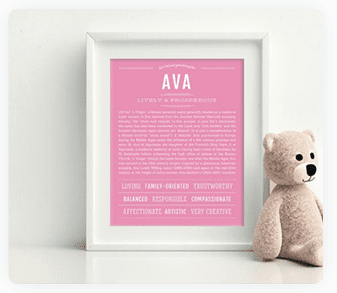Historic Figures
WITH THE NAME ANNE
Annelies “Anne†Frank was one of the best known figures of the twentieth century, the young Jewish girl in hiding who did not survive the holocaust of World War II, but who lives on immortally through her diary. Trapped by the Nazi occupation of the Netherlands, the German Jewish Frank family went into hiding in Amsterdam in 1942, a family of four confined to a couple of rooms with several other people. Ultimately, they were betrayed and captured. Anne died at the Bergen-Belsen concentration camp only weeks before the liberation by the Allied troops in 1945. Anne’s father, the family’s only survivor, found the diary his daughter had kept and was persuaded to publish it. In these poignant pages, an ordinary girl in extraordinary circumstances questions herself, her parents, the world she lives in, and the unknown and unseen forces that seem to prevail – her ultimate answer to herself, and to all of us down through the years, is that there is good, indeed, in mankind, in spite of every evidence to the contrary. She was one little voice; she spoke loudly and clearly for six million people.
Geraldine Ferraro is a woman who should be much more heralded than she is – as the first ever female vice-presidential major party nominee for that office in the United States, she blazed a trail that is still being foraged by women today, over thirty years later. Geraldine was born of Italian American parents in New York and was largely raised by her hard-working widowed mother. This gave her a lasting empathy for the poor, which permeated her politics. In a time when women were encouraged to get teaching or nursing degrees in case something “happened to their marriagesâ€, Geraldine got not only a teaching degree, but a law degree, being one of two women in her law school class. When she married, Ms. Ferraro retained her maiden name for the most part, as she served in various public legal offices before going on to run for the House of Representatives. Brash and ambitious, Geraldine worked her way up in the men’s club and was thrilled to be on the Mondale ticket. The nomination was met with both enthusiasm and opposition, as Geraldine’s policies (particularly on the pro-choice issue) were attacked and her personal financial matters were investigated mercilessly. At the end of it all, she and Mondale were trounced in the 1984 election by President Ronald Reagan. Geraldine Ferraro continued to be active in politics and humanitarian works, but she was absolutely right when she declared that her path would have been a lot smoother if her name had been Gerald.
Anne Boleyn holds the distinction of being the second of Henry VIII’s six wives and arguably the one who set in motion the king’s disposable attitude toward the institution of marriage in the first place. In fact, Henry’s brazen disregard for marriage as a religious institution would have far-reaching and game-changing effects on the history of England. But let’s get back to poor little Anne Boleyn, shall we? Henry’s first wife, Catherine of Aragon, failed to produce him a male heir. Restless and frustrated, the king turned his eyes on the Queen Consort’s maid of honor, a young noblewoman in her own right Anne Boleyn. Anne was quite popular at court and attracted the eye of many men given her beauty, stylish dress, fine education and sharp wit. But no one was in hotter pursuit than the king himself. Thus began Henry’s long ordeal in attempting to have his first marriage annulled so he could be free to marry Anne (Anne, it seems, was withholding her bedroom favors until then). As kings often have the power to do, Henry was able to get the Archbishop of Canterbury to null and void his marriage to Catherine of Aragon and to validate his subsequent marriage to Anne. Rome was not happy with this chain of events and the Pope promptly excommunicated both the king and the archbishop. The king retaliated by taking the Church of England under his control (thus kicking off the English Reformation and England’s break from Roman Catholicism). Shortly after the marriage, Anne gave birth to a daughter, the future Queen Elizabeth I of England. Not exactly the gender-preference old Henry had in mind, so Anne dutifully kept getting pregnant…and ill-fatedly kept miscarrying. Henry apparently had the patience of a gnat because it only took three years before his wandering eye took hold of future wifey #3 (Jane Seymour). But what to do about Anne? A few trumped up charges did the trick and Anne was sent to the Tower of London on thinly veiled accusations of “high treasonâ€. She was beheaded by a single stroke of the sword after a short “thanks but no thanks†three year stint as Queen Consort. Anne’s legacy remains as the ill-fated mother of the future Queen Elizabeth I.
Anne of Cleves was King Henry VIII’s fourth wife. After Henry dumped his first wife (Catherine of Aragon), and executed his second (Anne Boleyn), his third wife (Jane Seymour) died of complications from childbirth. This time, however, Henry’s fourth marriage was more about a political alliance rather than lustful attraction or the obsessive need to produce an heir to the throne of the XY variety. It was the king’s chancellor (Thomas Cromwell) who recommended the union to Anne of Cleves, a German (when England was in need of a little German love). When the future couple finally met, all hell broke loose. Although it was too late to back down. Henry purportedly found Anne to be too humorlessly German, unsophisticated, lacking in formal education, and of “middling beautyâ€. But let’s be clear. At this point Henry looked like some grotesque version of Austin Power’s “Fat Bastardâ€. The king tried to back out of the nuptials but it was clear his withdrawal would create damaging political problems for England. Still, the marriage lasted for a mere seven months, and, not surprisingly, Anne of Cleves went along with the annulment (on the grounds of non-consummation). We can’t really blame her. This gal got one of the richest alimony settlements ever! You go girl!
Anne Brontë is perhaps the least known of the three literary Brontë sisters (the other two being Emily and Charlotte of “Wuthering Heights†and “Jane Eyre†fame, respectively). Anne initially wrote under the pseudonym “Acton Bell†and is most known for her novels “Agnes Grey†and “The Tenant of Wildfell Hall†as well as various poetry. If you’ve read any of the Brontë sister’s works then you won’t be surprised to learn they grew up on the desolate moors of Yorkshire, the daughters of a poor Irish clergyman who, despite his early childhood poverty in Ireland, managed to learn how to read and write (and gain a clergy position in the Church of England). The girls’ mother was also well-read and intelligent (although she died when Anne was very young). There were six Brontë children in total: Maria, Elizabeth, Charlotte, Patrick, Emily and Anne. Maria and Elizabeth died before the age of 11 of consumption (contracted while away at school), and so the remaining children were kept home to be schooled. Charlotte, Emily and Anne’s imaginations were ignited by their environment of play and their father’s rich library of classical literature that they were able to fuel their own literary geniuses. It was through their restricted station in life (i.e., poor, educated girls’ only means of employment was that of a teacher or governess) where they found there inspiration in subject matter. While the girls’ were met with contemporary success in the debut of their novels, it was Anne who most vocally asserted her right as a female author in an otherwise mid-18th century restrictive atmosphere. She died at the young age of 29 of tuberculosis following the likewise untimely death of her beloved sister Emily. It was Charlotte who inadvertently subdued her sister Anne’s legacy by repressing the release of the somewhat scandalous (for its time) nature of “The Tenant of Wildfell Hall†after Anne’s death. Only more recently have critics come to appreciate the literary giant Anne Brontë was in her own right.
Queen Anne was the last reigning English monarch of the House of Stuart – the same Scottish royal House that gave England James I (James VI of Scotland), Charles I & II and William & Mary). She reigned over Great Britain from 1702 until her death in 1714. Queen Anne was the daughter of the last Roman Catholic King of England, Scotland and Ireland, James II. James II abdicated during the “Glorious Revolution†when Protestant and Parliament friendly William of Orange usurped his throne. Although William was a Dutch Dude, his wife was none other than James II eldest daughter (and Anne’s older sister), Mary II of England, who co-ruled with her husband during what’s known as the reign of William & Mary. So how did Anne ascend to the throne, you ask? William and Mary had no children (and therefore no heirs), which made Anne next in the line of succession (as per the Bill of Rights of 1689). “Good Queen Anne†as she was known was a popular Queen; her reign is remembered for four main things: 1) The onset of the War of the Spanish Succession in which the English joined forces with the Austrians and Dutch in war against France over who would rule the vast Spanish Empire; 2) The powerful influence the Duck and Duchess of Marlborough (John and Sarah Churchill) had over the Queen, and their political differences (Tories vs. Whigs); 3) The Act of Union of 1707 which unified England and Scotland under one throne and Parliament; and 4) Despite 18 pregnancies, Anne had not produced an heir. She suffered many miscarriages and still-births. What children did survive beyond infancy died in their youth. As a result, Queen Anne would be succeeded by her second cousin and the grand-nephew of James I of England, George I of the House of Hanover (a German royal dynasty).
Santa Ana (or Saint Anne) is believed to be the mother of the Virgin Mary, and grandmother of Jesus. She and her husband, Joachim, were unable to have a child for many years and then Anna was visited in the night by an angel who let her know that she would soon conceive a child. The couple were so happy with this news that they promised their child, once born, would be in the service of God. In addition to bearing the child who would become the mother of Jesus, Saint Anne is also the saint of women in labor.



